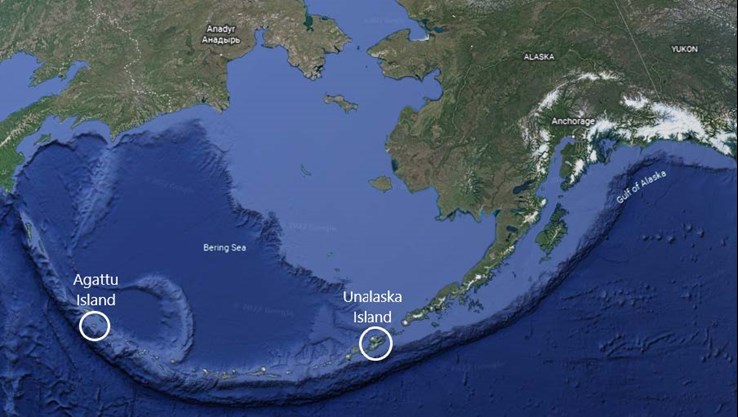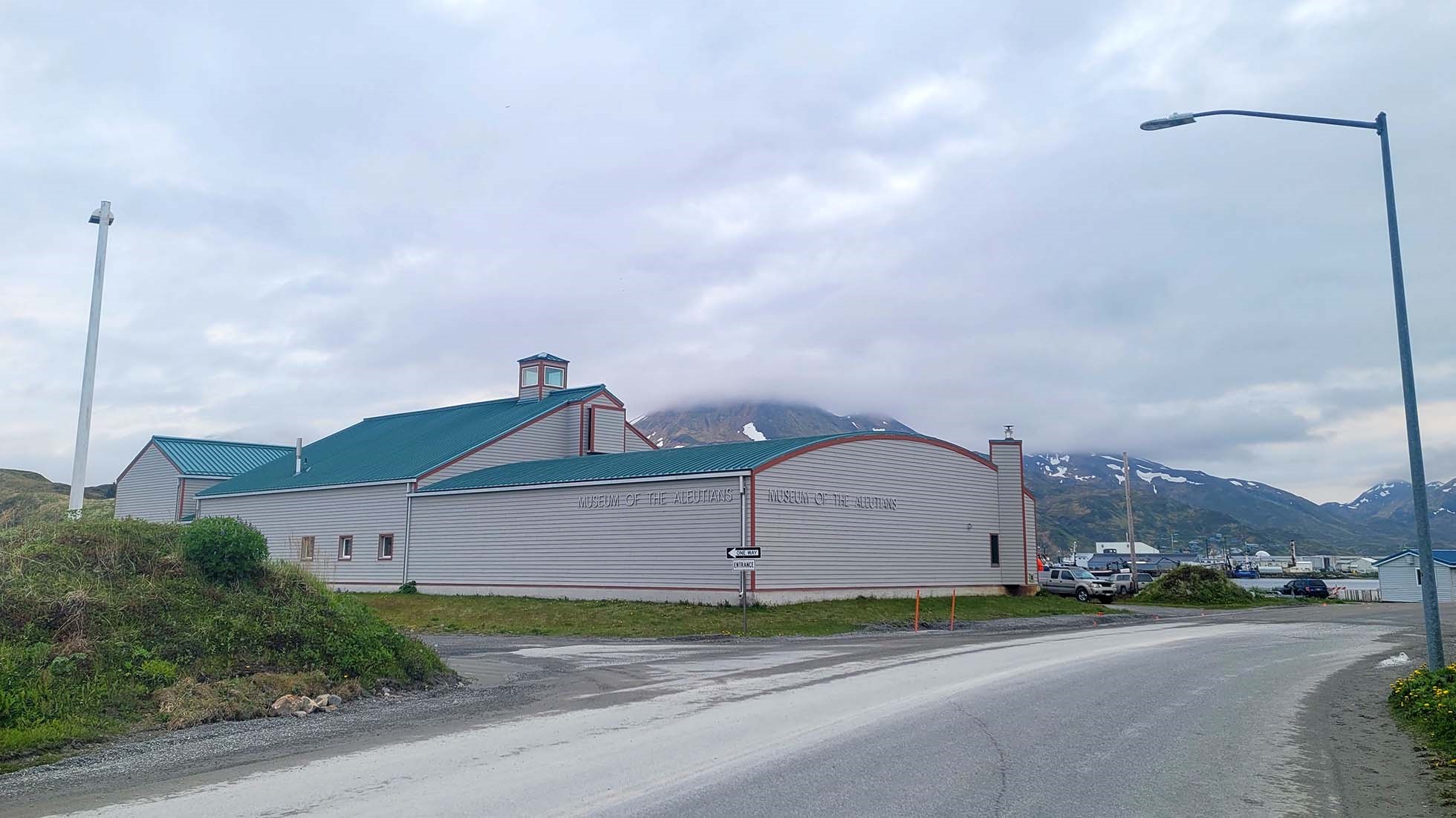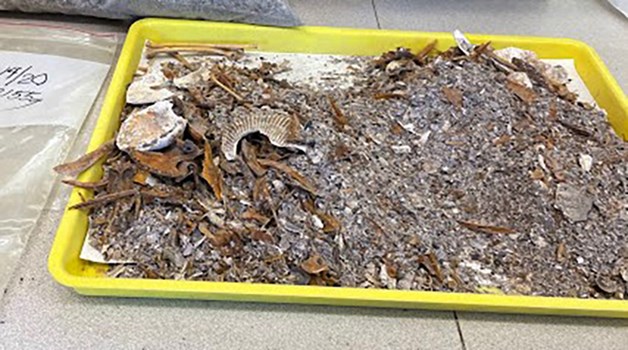June 30, 2022
by Mary Keenan

One of the major parts of completing a research project is the need to collect samples that will address your research questions. In laboratory research this may involve test tubes and Petri dishes, but in our project this means field work! Field work brings new and exciting adventures, along with some crazy logistics if you are trying to work in remote locations in Alaska. Flexibility, adaptability, and resilience are key qualities for all scientists, but these qualities are often pushed to their limits with field work in Alaska. When conducting scientific research, especially in remote field settings, things rarely go as planned. As a good field researcher, you need to be able to “role with the punches”, adjust, adapt, and have a good plan B.
After months of planning, our field work for the AMD project this summer was set to go on June 1st, 2022. Our field team of 7 (2 archaeologists, 1 paleoecologist, 2 zooarchaeologists, 1 linguist, and 1 marine biologist) were just 2 weeks away from traveling out to Agattu Island (Figure 1) in the far western Aleutian Islands. Everything was ready and we were just finalizing our food and gear checklists packing everything we would need to sustain our field camp and crew. Our field expedition team would camp on the island and excavate an archaeology midden for the whole month of June. I was going to get to be an archaeologist! We were going to excavate middens in search of Pacific cod, Steller sea lion, and northern fur seal bone for our AMD project.
 Figure 1: A map of the Aleutian Islands. Labels indicate Agattu Island, where field excavation was to take place this summer and Unalaska Island, where our museum expedition started (Source: Google Earth).
Figure 1: A map of the Aleutian Islands. Labels indicate Agattu Island, where field excavation was to take place this summer and Unalaska Island, where our museum expedition started (Source: Google Earth).
Most field work last summer was postponed or cancelled due to the Covid-19 pandemic so this summer was going to be our first opportunity to head to the western side of the Aleutian Island chain. The project co-PIs Dr. Nicole Misarti and Dr. Caroline Funk had been working tirelessly for the last year to gather all of the permits, paperwork, field crew, field gear, safety training, transportation, and other logistics that were needed to make our summer field work possible.
Exactly 2 weeks before we were supposed to leave for Agattu Island, we found out that our boat failed an open water test and would not be able to get us safely to Agattu. All the planning was put to a stop immediately and the student workers, including myself, awaited the decisions of the PIs, who were quickly adjusting to see how we could salvage this summer’s field season. After a few days our experienced PIs had a fantastic plan to not only salvage the specimen collection needed for the project, but also turn this in to a great learning experience for our scientists in training.
First things first, we are going to Unalaska (Figure 1), on the eastern side of the Aleutian Island chain. The Museum of the Aleutians (MOTA) is located in Unalaska. MOTA director and staff graciously allowed us to come last minute during a busy summer and sort bone samples from sites on Unalaska that had already been excavated by archaeologists in the past.
 Figure 2: A picture of the Museum of the Aleutians in Unalaska, AK, where museum research was conducted the first week of June. Photo by Mary Keenan.
Figure 2: A picture of the Museum of the Aleutians in Unalaska, AK, where museum research was conducted the first week of June. Photo by Mary Keenan.
While at MOTA, we sorted through bags of bone and other fauna from several previously excavated archaeological sites. We were swimming in piles of bones including pollock, greenling, halibut, cod, albatross, cormorants, harbor seals, sea otters, fur seals, Steller sea lions, whales, and more! We separated out all the bones to use for this project: Pacific cod, northern fur seal, and Steller sea lion bones.
 Figure 3: An unsorted tray of archaeological midden at the Museum of the Aleutians. We sorted through these trays looking for Pacific cod, northern fur seal, and Steller sea lion bones. Photo by Miranda LaZar.
Figure 3: An unsorted tray of archaeological midden at the Museum of the Aleutians. We sorted through these trays looking for Pacific cod, northern fur seal, and Steller sea lion bones. Photo by Miranda LaZar.
The bones were given a project number, measured, photographed, and subsampled for stable isotope and mercury analysis at our lab at the University of Alaska Fairbanks. In one week, we collected of over 400 bone samples! These samples put our overall project sample numbers over 1600 bones!
It wasn’t our original plan, but with our experienced PIs that know to expect the unexpected we were able to swap our field excavation for a museum expedition. This summer has been phenomenally productive. Lesson learned: Field plans must be flexible and back-up plans need more back-ups. Thanks to our resilient team, leadership of our project PIs, and generous collaborators at the MOTA, we were still able to collect samples this summer that will be vital to answering our project research questions in the future. We would also like to thank the Unalaska Corporation for allowing us to access the faunal remains at MOTA.
After our time in Unalaska, the field team is on their way to the Smithsonian Institution in Washington DC. There they will continue processing excavations from years past! See next month’s blog for the next leg of our field teams summer adventures!